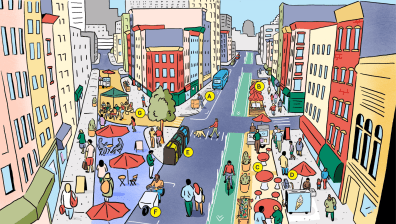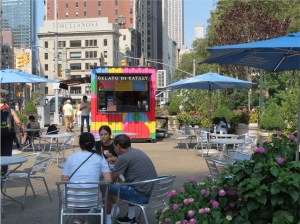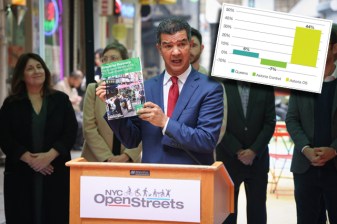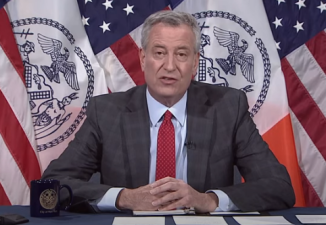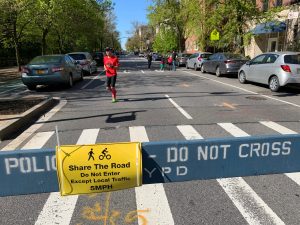OPINION: BID Leaders Tell Mayor to Open Streets for Retail … Now!
The outdoor-dining program is a lifeline for restaurants. Before the holidays, stores need the same space, say two Bronx business leaders.

Before COVID-19, the Bronx was on a trajectory of growth and economic opportunity — which we thought was making the borough more competitive locally and globally for the foreseeable future. The pandemic has had an outsized impact on the borough and highlighted widening economic disparities. Since January, the borough’s unemployment rate jumped from 4.9 percent to almost 30 percent. This “perfect storm” requires a comprehensive plan for economic recovery and management of our streets.
The city successfully rolled out “Open Streets” and “Open Streets: Restaurants” in partnership with business improvement districts and other community stakeholders. Outdoor dining is a lifeline that local restaurants desperately need — even if it is not a silver bullet. The city moved rapidly to implement these programs. We applaud the expedited self-certification process, something we rarely see in city government.
Now, our retailers need a similar lifeline.
We are calling upon Mayor de Blasio and the Department of Transportation to immediately implement a program that will allow retail businesses to use public space in creative ways similar to the successful Open Restaurants initiative. With the holiday season approaching, merchants must be able to plan, order appropriate inventory and market their goods, or they will close. The closure of our ground-floor retailers will plunge the city into a storefront-vacancy crisis that will threaten neighborhoods’ safety.
The city should act quickly to establish reasonable, clear guidelines and rules for participating in an “Open Stores” program. Businesses would be required to self-certify their participation in the program and their commitment to follow established rules, with the city waiving permits and fees.
The program should include:
-
Suspending relevant city rules and administrative-code through an emergency order in order to allow storefront retailers to display merchandise and conduct activity (i.e., sales transactions, placement of temporary signage, non-permanent queuing stations, seating, etc.), on adjacent sidewalks within three feet from the property line, as-of-right during business hours, including on “zero sidewalk display streets”
-
Allowing storefront retailers to use adjacent sidewalks, for uses as described in the first recommendation, for up to four-and-a-half feet from property line, as long as they maintain a minimum of eight feet unobstructed clear path for pedestrians
-
Allowing storefront businesses to participate in “Open Streets: Restaurants” under the same guidelines, siting criteria, etc., as restaurants that participate. This would include sidewalk and roadway use.
-
Meaningfully addressing illegal street vending by instituting real reforms that will have a transformative effect on our approach to the use of streets and public spaces.

Our borough’s storefront businesses and non-essential retailers are struggling as the city embarks on a slow economic recovery. These businesses are the economic backbone and lifeblood of our neighborhoods. Non-essential retailers may operate, but with strict capacity, distancing, and other mandates. Many stores have remained closed, and those that are open are struggling to attract customers or compete with e-commerce giants.
The city needs to create a comprehensive plan that addresses the needs of brick-and-mortar businesses, street vendors, sanitation, and public safety.
If the city doesn’t act quickly to launch this program, we risk more permanent closures of small businesses in the Bronx and the destabilization of neighborhoods citywide. There are only a few weeks before the traditional holiday shopping season. We need a plan for our local economies now.
Jennifer Tausig is the executive director of the Jerome Gun Hill Business Improvement District. Michael Brady is the CEO of the Third Avenue Business Improvement District. Both districts are in the Bronx.
